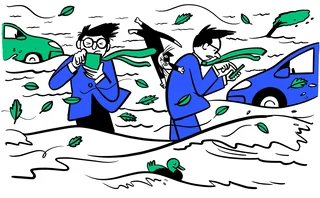
CME acquires hurricane index
CME Group has acquired the Carvill Hurricane Index from Carvill America Inc. and renamed it the CME Hurricane Index.
The exchange has also signed a Memorandum of Understanding with EQECAT, an extreme-risk modeling company, to be the new calculation agent for the index.
CME's hurricane futures and options will be listed with, and subject to, the rules and regulations of CME. They will be settled to the CME Hurricane Index (CHI), which provides a numerical measure of the destructive potential of a hurricane. This is based on EQECAT's calculation of the maximum wind velocity and size (radius) of each official storm, showing the potential for physical and financial damage. The higher the CHI number, the more potentially damaging the hurricane.
Felix Carabello, director of alternative investment products at CME Group, said: "We continue to be encouraged by the growth of the weather derivatives market, especially hurricane futures and options, which already have traded 4,000 contracts before the start of this year's hurricane season."
"EQECAT is very excited about supporting the CME as calculation agent for its Hurricane Index," added Dennis Kuzak, senior vice president of EQECAT. "And with the integration of EQECAT's risk modeling technology, we hope to increase the attractiveness of the CHI by providing superior risk metrics which would assist market participants in pricing and hedging property insurance risk."
In addition to its hurricane products, CME Group offers weather contracts based on aggregate temperatures for 45 cities, including 24 in the US, 10 in Europe, six in Canada, three in Australia and two in Japan. CME Group also lists products used to hedge risk associated with snowfall and frost.
Only users who have a paid subscription or are part of a corporate subscription are able to print or copy content.
To access these options, along with all other subscription benefits, please contact info@risk.net or view our subscription options here: http://subscriptions.risk.net/subscribe
You are currently unable to print this content. Please contact info@risk.net to find out more.
You are currently unable to copy this content. Please contact info@risk.net to find out more.
Copyright Infopro Digital Limited. All rights reserved.
As outlined in our terms and conditions, https://www.infopro-digital.com/terms-and-conditions/subscriptions/ (point 2.4), printing is limited to a single copy.
If you would like to purchase additional rights please email info@risk.net
Copyright Infopro Digital Limited. All rights reserved.
You may share this content using our article tools. As outlined in our terms and conditions, https://www.infopro-digital.com/terms-and-conditions/subscriptions/ (clause 2.4), an Authorised User may only make one copy of the materials for their own personal use. You must also comply with the restrictions in clause 2.5.
If you would like to purchase additional rights please email info@risk.net
More on Catastrophe
Cat risk: why forecasting climate change is a disaster
Forecasters are poles apart on climate-driven catastrophes; insurers fear worse ahead
Catastrophe modellers embrace open platforms
Liberalised cat modelling market will place extra demands on model validation
Reinsurance sidecars evolving as competition for third-party capital hots up
Sidecars mimicking ILS funds to lure investors entering collateralised reinsurance space
Reinsurers welcome reduced collateral requirements for US business
Piecemeal reform of reinsurance laws continues to frustrate Lloyd’s market
Cat bond sponsors tempt investors with diversified perils and geographies
Innovative structures seek to break dominance of US wind peril over ILS market
Governments must ‘stop distorting cat markets’ with insurance pools
Let commercial market price risk, while governments should focus on risk-reduction, think-tank says
Better risk data vital if insurers to boost disaster coverage
Steps to improve risk modelling needed if Europe wants insurers to increase cat risk exposure, say experts







